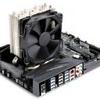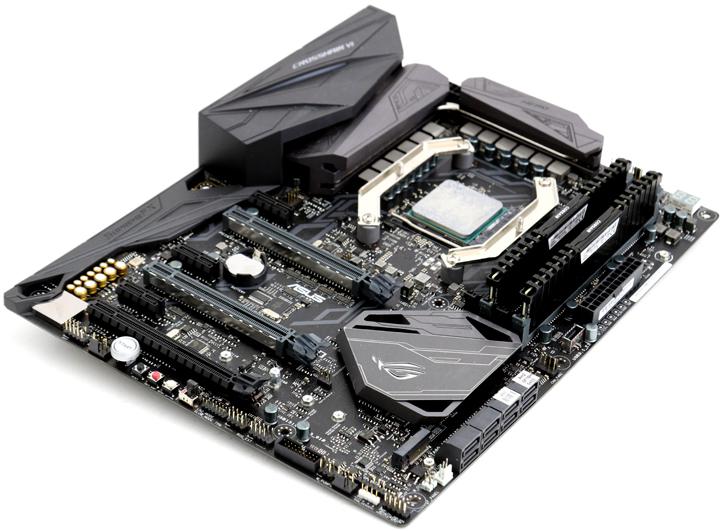Introduction
ASUS Crosshair VI Hero
A high-end motherboard to get the most out of your 8-core AMD processor.
We have tested and reviewed all Ryzen 7 processors, now it is time to zoom into the motherboards. This reviews details the € 289 ASUS Crosshair VI Hero. The X370 motherboard is the high-end alternative in the Ryzen motherboard spectrum. A motherboard with plenty of features and options, as well as a little RGB bling.
AMD has released Ryzen 7, the product name and series for their released 8-core (16 thread) processors. A processor series fabbed at a more efficient and optimized 14 nanometer FinFET process, rather than the 32 nm and 28 nm processes of previous AMD FX CPUs and AMD APUs, respectively. AMD's processors and APUs over the years have run their course really, for the gamer and more mainstream PC aficionado the older FX and APU series simply lack in raw processor performance compared to what the competition has been offering. We discussed it many times in the reviews, but if you compared an Intel processor core and an AMD processor core and clocked them at the very same frequency, Intel was almost half faster. The effect of that phenomenon showed in the less optimized and threaded applications, many games are a good example here. Ryzen series 7 is likely best matched with the B350 (a little more value) and the X370 motherboards as it is a high-end desktop (HEDT) product series.
Much like the competition AMD will be selling Ryzen in product stacks; low-end, mid-range and high-end much like Intel's Core i3, i5 and i7 series. Earlier on these were referred to as SR7, SR5 and SR3, matching up with Summit Ridge (SR) and thus a performance segment denominator. But then Summit Ridge from the new Zen architecture was named Ryzen, and hence one more change in naming has now been made. You will see Ryzen series 3, 5 and 7 processors. The Ryzen series 7 processors are eight core processors at attractive pricing combined with an IPC increase of roughly 52%. They come with four integer units, two address generation units and four floating point units, the decoder can decode four instructions per clock cycle. L1 data cache size is 32 KiB and 64 KiB for instructions, the L2 cache size is a whopping 512 KiB per core. Two of the floating point units are adders, two are multipliers. One unit that holds four processors is a CCX (core complex). Ryzen 7 is an 8-core processor series and thus that means 2 CCXs x 8 MB (L3) + 8 x 512 KB (L2) = 20 MB in total for L2 and L3 caches. These numbers sound familiar, eh (Intel)? Today is obviously not just about the processors, au contraire mon ami, you are going to need a new motherboard as well of course.
A new processor series will need a new chipset as the motherboard needs an infrastructure as well. This has been outsourced and at launch you will see multiple product stacked motherboard chipsets. For Ryzen, you probably want a high-end / enthusiast class chipset with lots of features and tweaking options, this will be the X370 chipset that went along with the launch of the processor series release. X370 will give home to the new socket AM4 and will provide DDR4 memory support (as well as all other modern usual suspects like USB 3.1 gen 2, SATA Express, as well as NVMe protocol based M.2 support and surely PCI-Express Gen 3.0). For Socket AM4 the following chipsets will be released: X370, B350, A320, X300 and A300. X370 is the most high-end series. Today's tested motherboard, the ASUS Crosshair VI Hero, is based on the X370 chipset and thus its feature set. This board includes support for M.2-NVMe SSDs, USB 3.1 as well as ESS Sabre DAC and amplifier. The Crosshair supports two-way SLI and CrossFireX configs split between its main PCI Express x16 slots. The PCIe slots have reinforcements to withstand the weight of high-end cards. The audio features an Realtek 1220 codec that improves input quality for streamers with an industry-leading 113-dB SNR for the line-in paired with an ESS Sabre DAC.
Overall we have lots to talk about, let’s start up the review, next page please.


